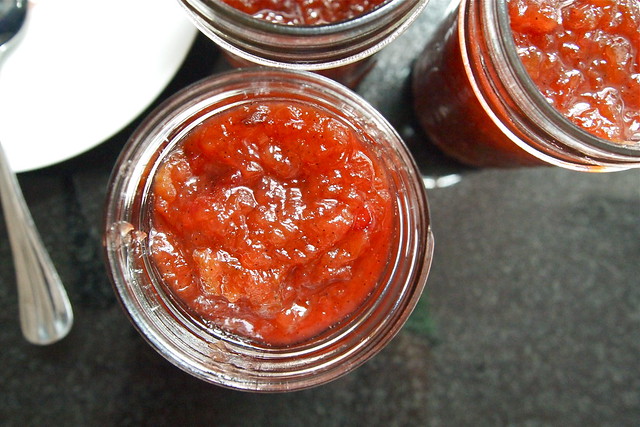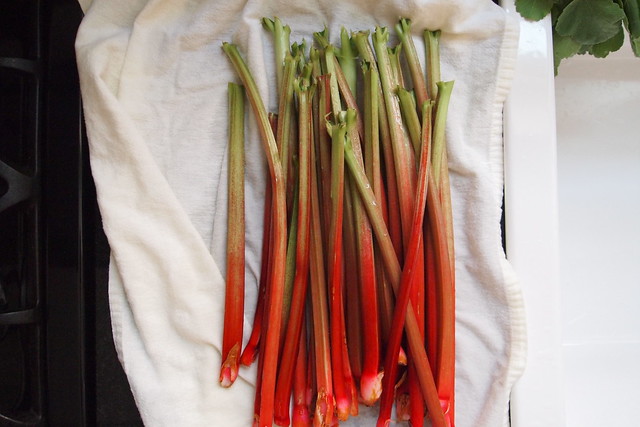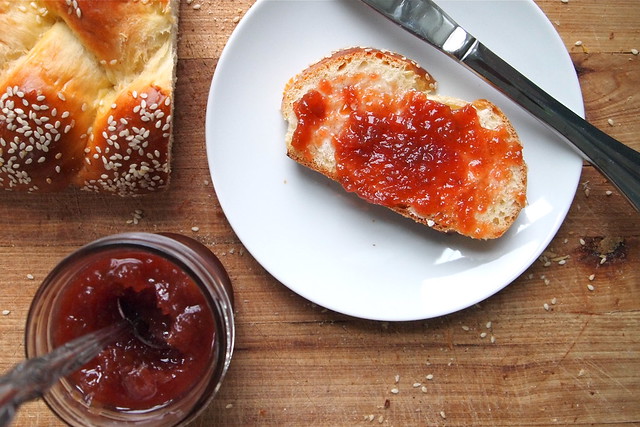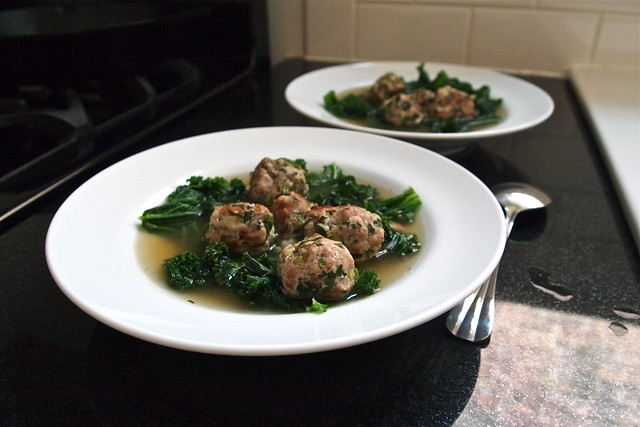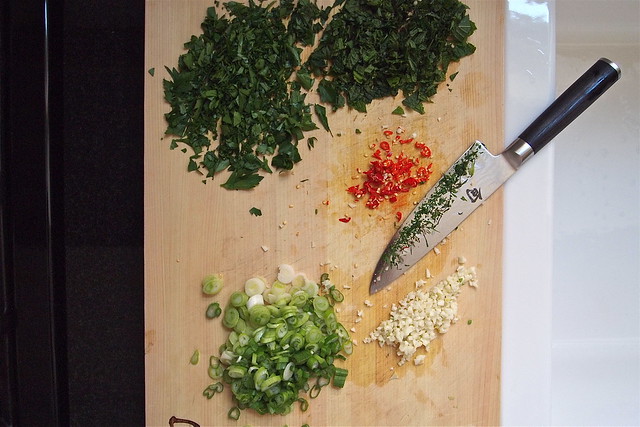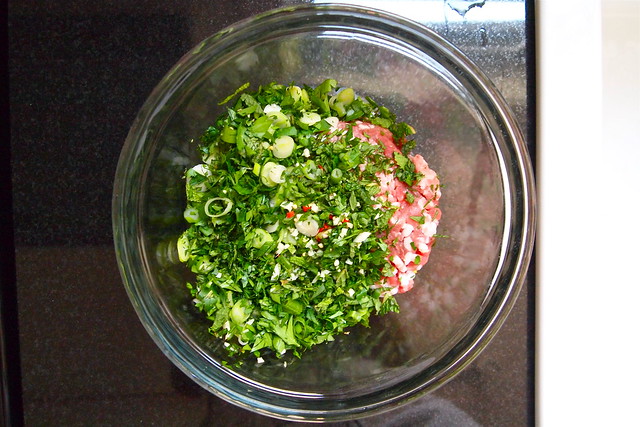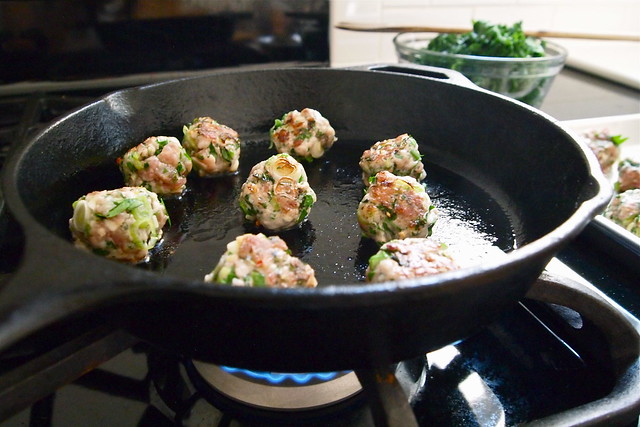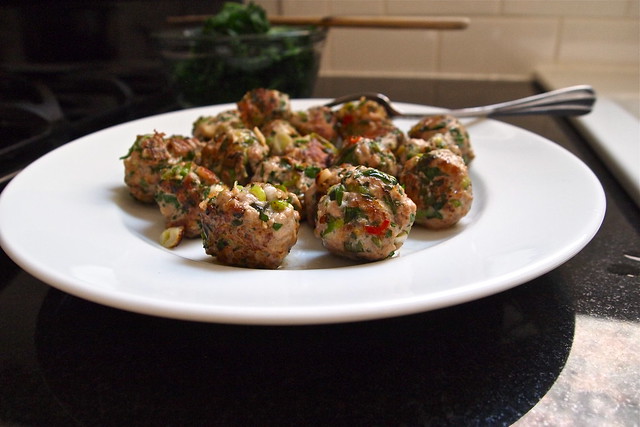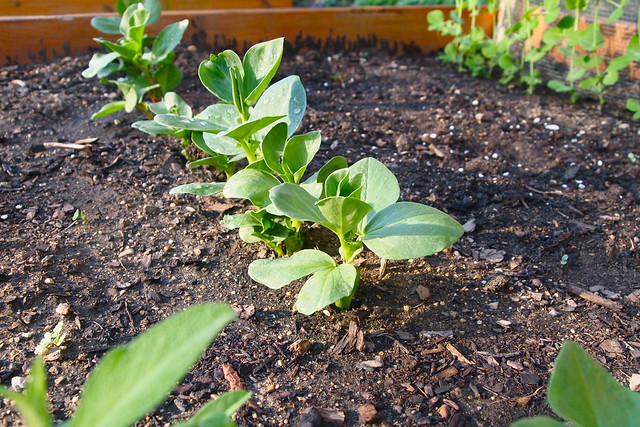Last year, I let rhubarb season pass me clear on by. I had deadlines to meet and couldn't allow myself even to daydream about matters pink and bright. It would have been too much. One thing would have led to another. Daydreams to a bus that would take me across town. That bus to the festive sprawl of Green City Market and row upon row of pearly pink stalks. A serious armload of such stalks to an afternoon in the kitchen, chopping them up and letting them cook down in sugar. And if you ask me, there few better ways to spend an afternoon. But deadlines are deadlines. So I pushed those thoughts out of my head and let the season pass.
This year, I was determined to have things turn out differently. This season would have to make up for the last. I would get my hands on some rhubarb early and make the most of it. So, last weekend, as a start, I scooped up some rhubarb from the market and made myself a few jars of rosy-hued jam.
Now, making jam is one of those things I don't have much experience with. I've made jelly here and there in small quantities, but none has been an unqualified success. Like the apple jelly I made last October--I let it cook for way too long. After it set, it was pretty well unworkable, like trying to spoon and spread an oversized gummy bear on toast. So, yes, preserving fruit--or at least fruit juices--has not really been my thing. But lately, for some reason, the idea is something I've been drawn to. I think that it has something to do with tangibility. So much of what we make in the kitchen disappears so quickly. That's just how it is--an afternoon's effort spent in a few mouthfuls. But a batch of jam is something you can hang on to for a good long while. And it marks some particular moment in your year. I, anyway, find comfort in the idea that I could wake up on a dark morning in January and find a row of jars in the kitchen still aglow with summer. There would be something really special about prying open one of those jars on a morning like that and thinking back to the day I'd ladled in the fruit and sealed it up.
But I'd be surprised if this particular batch lasted until January. For one, it's a very small batch--just a little over a pint's worth. But more to the point, the jam is very good--bright, fruity, and aromatic. It'll be hard not to go through it all pretty quickly. I'm hoping, though, that this batch is only the first of many I'll make this year.
Adapted from Brandi Henderson's I made that!
Note: Though my jam-making experience is limited, I've found that it's one of those cooking processes where it pays to be very attentive--not enough stirring and you might scorch your fruit or let it overcook. You could also make use of a candy or instant-read thermometer in cooking the jam (the set point is supposed to be 220 degrees F), but I've found the wrinkle test to be a more reliable indicator. About the lemon. The lemon in this recipe is important for two reasons. First, the juice adds the acidity needed to make the jam shelf-stable. Second, both the juice and rind add pectin, which will help your jam set.
24 oz rhubarb, trimmed
17.25 oz granulated sugar
Half a vanilla bean
1 lemon, preferably organic
Slice the rhubarb into pieces about 1/8 of an inch thick. For particularly thick stalks, halve them lengthwise before slicing.
Pour the sugar into a large bowl. Split the vanilla bean lengthwise, scrape out the seeds, and add them to the sugar. Using your fingers, break up the clumps of seed and distribute throughout the sugar. Add in the rhubarb and the vanilla pod. Juice the lemon and add to the rhubarb. Cut the rind and flesh into quarters, remove any seeds, and then add the quarters to the bowl. Stir well. Cover and refrigerate for at least an hour (but up to overnight) to allow the fruit to release its juices.
Sterilize two half-pint jars and their bands and lids, either by heating them in a 200 degree F oven or in boiling water for 10 minutes. Put a small plate in the freezer.
Transfer the rhubarb to a large, heavy-bottomed pot. Bring to a lively simmer over medium-high heat. Continue to cook, stirring frequently, until the fruit is thickened and hisses loudly in the pot as you stir, about 20-25 minutes. Check to see if the jam will set. Spoon a small amount on the cold plate from the freezer. Return the plate to the freezer for 1 minute. Try pushing the jam with your finger. If the surface wrinkles, the jam is ready. If not, continue cooking for a few more minutes and repeat the test. Remove the jam from heat and ladle into the sterilized jars, leaving a 1/4 inch of head space. Wipe the jars' rims clean and put on their lids and bands.
Process in a boiling-water bath for 10 minutes (count 10 minutes from when the water returns to a boil). Remove the jars from the water and let cool. Check to see if a proper seal has formed by removing each jar's band and holding the jar by its lid. The lid should hold firm. If it doesn't, store the jar in the fridge and eat its contents promptly.
Makes about 1 pint.

